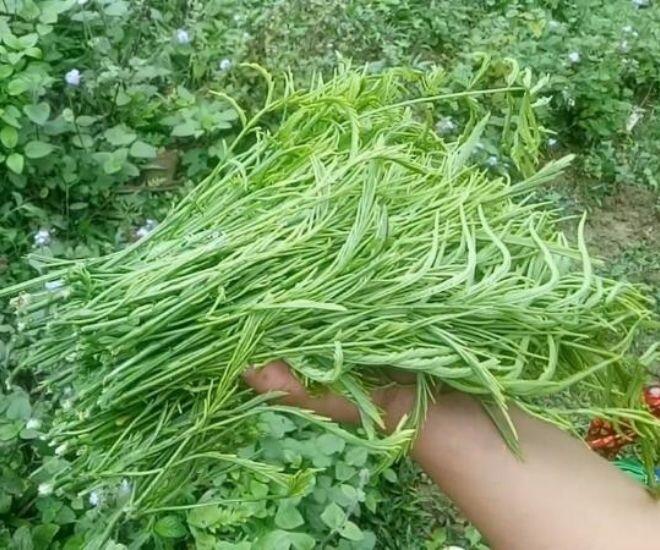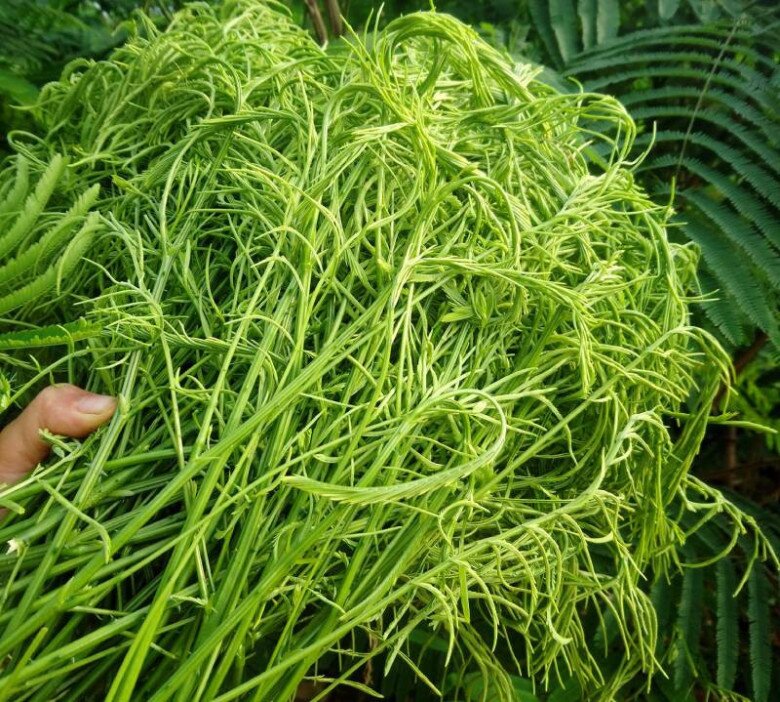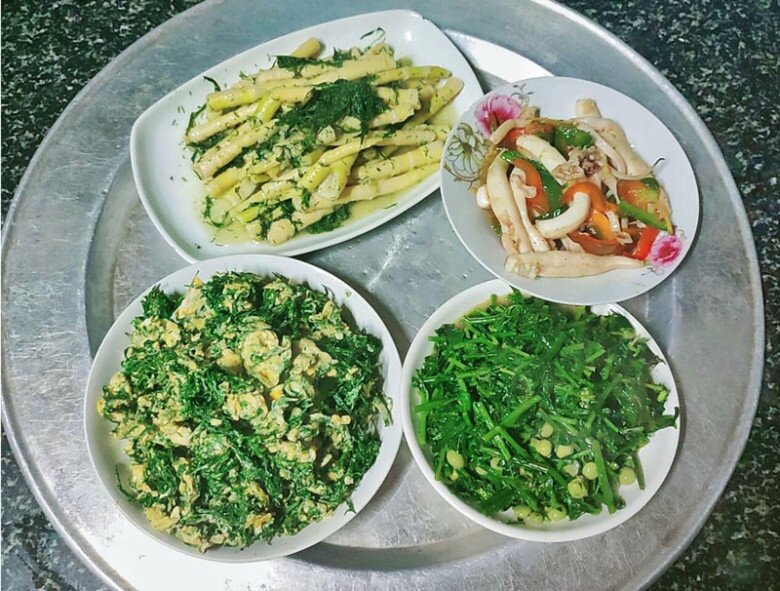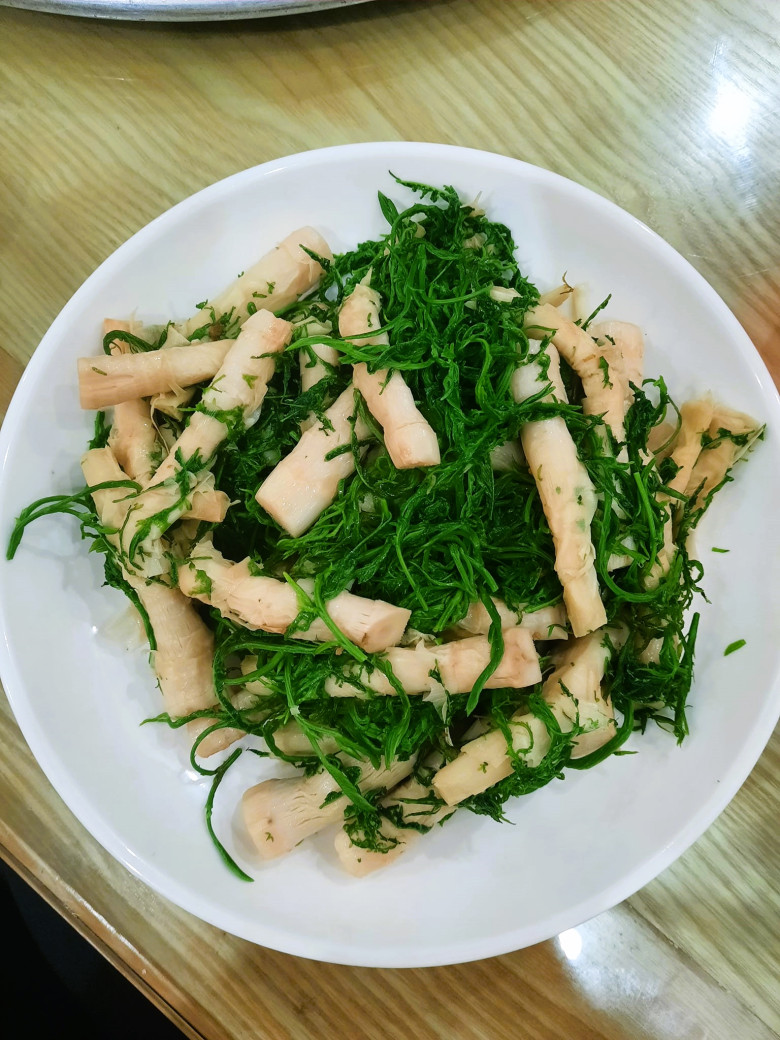
In the Thai ethnic language, “rau thối” is known as pắc nam. This wild forest plant belongs to the vine family, with long, thorny stems and dark green, symmetrical leaves. The tender young shoots are the most prized part, used both in cooking and as a medicinal herb. Harvesting requires caution due to the sharp thorns.
Rau thối thrives from March to June, when the Northwest forests are lush and humid. It’s most abundant in Son La, Dien Bien, Lai Chau, and Yen Bai provinces. During this season, fresh rau thối appears in highland markets and is transported to cities like Hanoi, where it’s featured in specialty restaurants. While local prices are modest, urban markets can charge hundreds of thousands of dong per kilogram.
The Aroma of the Mountains
Its name, “rau thối” (stinky vegetable), comes from its strong, distinctive scent, which can be off-putting to first-timers. However, many find the smell intriguing rather than unpleasant. The aroma softens after harvesting, and locals prefer it fresh for its bold flavor. Paradoxically, when cooked, rau thối becomes fragrant, crisp, and sweet—a contrast that makes it unique. Many visitors, initially hesitant, become fans after tasting it.

Beyond its culinary use, rau thối is a valued herbal remedy. Locals consume it to cool down in summer and treat joint pain. Dried rau thối is used in traditional medicine for liver, kidney, and stomach ailments, as well as acid reflux and mouth sores. Its health benefits have made it a sought-after specialty, prized for both flavor and wellness.
Culinary Delights from Rau Thối
Northwestern cuisine blends forest ingredients with ethnic culinary traditions, and rau thối is no exception. It stars in several creative, nutritious dishes.
Rau Thối Salad with Wild Eggplant and Dried Pork: A signature dish in highland restaurants. Blanched rau thối is tossed with wild eggplant, shredded dried pork, fish sauce, lime, chili, and peanuts for a refreshing, tangy flavor.
Pork Tail Soup with Rau Thối: A hearty family favorite. Tender pork tail simmered with rau thối creates a sweet broth that highlights the vegetable’s unique taste.
Stir-Fried Rau Thối with Bamboo Shoots: A simple summer dish. Crisp bamboo shoots and rau thối combine for a light, cooling effect.
Grilled Stuffed Fish with Rau Thối: A festive specialty. Freshwater fish like carp or trout are stuffed with rau thối and spices, then grilled over charcoal for a smoky, aromatic delight.
Rau Thối Fritters: A modern twist. Minced rau thối mixed with ground meat, seasoned, and fried until crispy. Served with fish sauce, it’s a hit among young foodies.
Rau Thối Egg Drop Soup: Similar to tomato egg soup but with rau thối’s bold flavor, appealing to those who enjoy its distinct taste.
Rau thối can also be steamed with dipping sauce, stir-fried with beef or pork, or enjoyed in various other ways. Each preparation offers a unique experience, making it a cultural culinary symbol.

For travelers, rau thối is a unique regional souvenir. Though less common than tea or plums, its distinctiveness makes it memorable. Many buy fresh or dried rau thối as gifts, despite higher city prices, for its flavor and cultural value.
Today, rau thối has moved from highland homes to urban restaurants, featuring on tourist menus. It’s one of the Northwest’s most distinctive specialties, offering a curious blend of aroma, flavor, and cultural insight.

Beyond its initial scent, rau thối reveals a crisp sweetness when cooked, showcasing the sophistication of local cuisine. With its culinary and medicinal value, rau thối is a proud emblem of the Northwest—a must-try for those exploring Vietnam’s regional specialties.






























